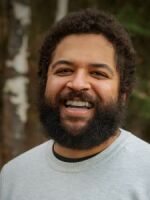An Anchorage child care provider is trying to figure out how to stay afloat after it opened less than two years ago.
Staff at the Hmoob Cultural Center of Alaska say demand is not the problem, but they’re struggling with high operating costs, paired with low and late state subsidies. It's a familiar trend in a state strapped for child care.
“We do get a subsidy, but then, you know, it comes like a month after,” co-owner and director Suzy Yang said. “So it's kind of held us back on what needs to be paid to operate.”
Yang opened the Hmoob Cultural Center in Midtown in 2022 as a way to share her Hmong culture and build community. It currently serves about 70 kids from infants and toddlers up to preschool, as well as after school care for older kids.
“We love to serve families,” Yang said. “We know how the struggle is. You know, without childcare, you can't work. So, we want to be the person who's providing all that for the parents who need to work.”
Now, the center faces rough financial waters. Yang said city officials told her she must renovate the playground, which is over 30 years old, or the center runs the risk of losing its license. She said it’s an expense the center can’t afford with the money it's getting in.
Many families who use the center qualify for a state child care subsidy, she said. Basically, parents who qualify apply with the state, and the funds are sent directly to the centers to help offset fees, but Yang said the money doesn’t always show up quickly.
Alaska’s child care industry has been in crisis the last few years, with rising costs and limited availability making it tougher for parents to find quality care for their kids. Gov. Mike Dunleavy convened a task force to address the issue last year.
Recently, the task force unveiled a study that found there’s a sizable gap between what providers receive in subsidies and what the care actually costs. Melinda Myers is the chief operation officer of thread Alaska, a nonprofit that helps connect families to child care. She said centers often tie their prices to the subsidy amount.
“I think it is challenging for programs to charge the true cost for care, because they know that can be a real burden on families,” Myers said. “Even those on subsidy, because there’s a gap between what the subsidy will pay and what they really would have to charge for the cost of the care in reality.”
Hmoob Cultural Center lead preschool teacher Shannon Hartley said the center doesn’t want to raise its prices, but there aren’t a lot of other ways to make more money. They can’t add more children due to existing restrictions on how many kids can be in a building of their size. Hartley said they wanted to expand their square footage.
“We were on the road to expansion into the next store unit,” Hartley said. “As soon as we had these things that we needed to fix, we had to shut that down.”
At this point, it’s looking like the center may have to relocate if it wants to stay open. Hartley said a new center would likely require startup costs, and may not be able to fit all the current families.
“To piggyback on the square footage, you know, wherever we would find might be smaller,” Hartley said. “We might have to lose families.”
Leilani Money and her 4-year-old daughter Makana have been going to Hmoob Cultural Center since soon after it opened. When she found out about the potential closure, she started her search for new care.
“Calling every daycare that I could find,” Money said. “But everybody is pretty much on a two- to four-year wait list, and I kind of need that now more than later, just because I can't just stop working.”
She’s not alone. Myers with thread said the state has seen a decline in the number of child care providers in the last couple years, and lengthy waitlists have made it next to impossible for families to find child care quickly.
“Our early childhood specialists who do our referrals are hearing from parents on a daily basis of their need for care,” Myers said, “and it's really a struggle, even for our staff, because they're hearing these stories of parents who are in dire need of care, cannot find care that meets their needs.”
The state child care task force is currently working on recommendations to address the stresses on providers. Leah Van Kirk is a policy advisor with the Alaska Department of Health, which oversees child care.
As the task force weighs potential changes to the subsidy program, she said she’s hopeful that a pending change in federal child care policy will at least get the money to providers more quickly.
“Some of the changes that we're seeing at the federal level that will be implemented at the state level in the next year is that child care providers will be paid prospectively, rather than retrospectively,” Van Kirk said. “And so that, I think, will improve that overall system.”
In the meantime, parents like Money face not only the potential challenge of finding new care, but saying goodbye to the centers that have supported their kids.
“It just feels like one big, happy family here,” Money said. “It's hard to trust for me. I've grown up with little to no trust at all with my own family. So I created my own family here.”
While Yang said the center’s future is still up in the air, she and her staff remain committed to providing for their families.





